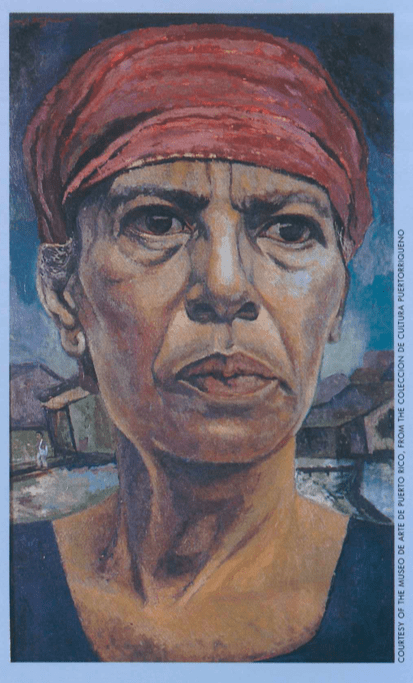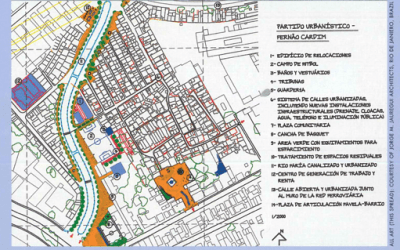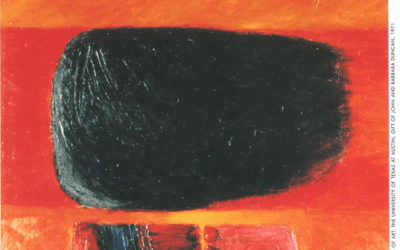Museo de Arte de Puerto Rico
Toward a New Museum Model

Augusto Marín, El nido, 1961.
As a Harvard student from Puerto Rico researching my doctorate in art history, I tended to think of museums as places to preserve, study and exhibit unique objects. Now, as a curator for the Museo de Arte de Puerto Rico, I’ve learned first-hand that the museum has become a more complex institution.
During the 19th century, U.S. museums were thought of as palaces of learning, institutions where immigrants and the working class could acquire much needed culture. Now, in the 20th century, the erection of a museum can raise the value of real estate for miles around it. Certain museums like the Guggenheim Bilbao have demonstrated that building a museum can be a gigantic tourism magnet, revitalizing a town’s economy. No longer a purely disinterested venue, museums have become the site where culture and learning meet with economic investment.
Although Puerto Rican art has developed considerably over more than three centuries, the island’s major museums did not have as their principal mission collecting, caring for and exhibiting Puerto Rican art. Island art has suffered from a lack of investment, and San Juan was badly in need of a major art museum. A few institutions, as well as private patrons, however, had fostered art and artists, collecting their works and providing a space for meeting and learning. To these the museum dedicated its inaugural exhibition, Treasures of Puerto Rican Painting, which I curated.
By bringing the collections under one roof in this exhibit, I found the term “Puerto Rican art” contributed to the promotion of an eclectic and rich identity. The construction of The Museo de Arte de Puerto Rico (MAPR), funded by the Government Development Bank of Puerto Rico in 1997, was in itself an affirmation of that identity and a commitment to the promotion of art. MAPR combines a newly restored early twentieth century building designed by William Schimmelphening with a modern, five floor annex. Architects Otto Reyes Casanova and Luis Gutiérrez conceived a museum with two faí§ades, symbolizing both tradition and innovation. Realizing the museum’s potential to attract tourism to the Island, the Puerto Rico Tourism Company was actively engaged in the planning stages of the building.
The museum’s inaugural exhibit brought together some of the most distinguished paintings of our history, chronicling the history of collecting in Puerto Rico. Collectors do not enjoy a good reputation. Many common citizens see them simply as wealthy individuals thirsting for possessions; many artists resent them. Few people understand that to collect is to preserve, as well as to impart an order, no matter how personal, unto the vast array of materials that is available for collection. Thus, the history of institutional collections such as that of the Archbishop’s Palace, which holds a great number of works primarily church commissions by the 18th-century painter José Campeche contrasts with collections such as the Museo de Arte Contemporáneo, inaugurated in 1984 and dedicated to post-war art.
I found that exhibiting Puerto Rico’s greatest paintings together by collection instead of chronological order, as is the norm, liberated the viewer’s imagination, prompting reflections on how taste has shaped what we consider to be Puerto Rican art. Thus, although Puerto Rican scholars associate religious painting with the 17th and 18th century, I discovered there were many religious paintings throughout the 19th and 20th centuries. A similar thing occurred with portraiture, which abounded throughout our history, but was not considered worthy after the early 20th century. These shifts indicate the development of new genres landscape and still life in the nineteenth century, regionalist pictures in the early twentieth century which were thought to better embody Puerto Rican reality. As we approached the field of contemporary art, whole styles of painting like abstraction, or schools of artists working in New York rather than Puerto Rico were given short shrift in favor of figurative painting.

Rafael Tufiño, Goyita, 1953.
The Museo de Arte de Puerto Rico, which has presented a lively exhibition schedule since its inauguration, contributes greatly to the cultural life of the Island. It has featured a show of Pepón Osorio’s installations, which deal with Latino culture in the United States, as well as a collective exhibition of installations by young artists. This year the museum will open a major, two-part exhibition, Art in Puerto Rico through the Ages, charting the development of Puerto Rican art while placing it within a socio-historic context, as well as several travelling exhibitions, such as The Spiritual Adventure of Modern Art: Kandinsky as the Russian Avant-Garde.
The once downtrodden neighborhood of Santurce, where the museum is located, is slowly showing signs of regeneration, as art galleries, restaurants and stores begin to open their doors. Attendance figures since the museum opened on July 1, 2000 have climbed to 85,000, an unprecedented number in the Island and tourism season is just beginning.
Perhaps the time has come for the new model of museum, part palace of culture, part economic investment, to make its entrance into Latin America. Puerto Rico, which maintains a distinct, Spanish speaking culture yet has a longstanding political relation to the United States, could just be its testing ground.
Winter/Spring 2001
Mercedes Trelles, a Harvard doctoral candidate in art history is the curator of the Museo de Arte de Puerto Rico.
Related Articles
Guatemala Diary
In a deeply personal way, I feel like I am home again. Of all the places I have visited, Guatemala is the country I love and feel closest to. Certainly the most impressive aspect is the persevering Mayan people, who endured a 30-year civil war…
From Favela to Bairro
The Brazilian firm of Jorge Mario J¡uregui Architects is the first Latin American recipient of the Harvard Graduate School of Design’s Veronica Rudge Green Award in Urban Design. The award…
Exploring New Horizons in Latin American Contemporary Art
When I first traveled to Peru by boat with my family fifty years ago, the country seemed as far away from Argentina as Boston from Buenos Aires. My husband had been sent there by W.R…




